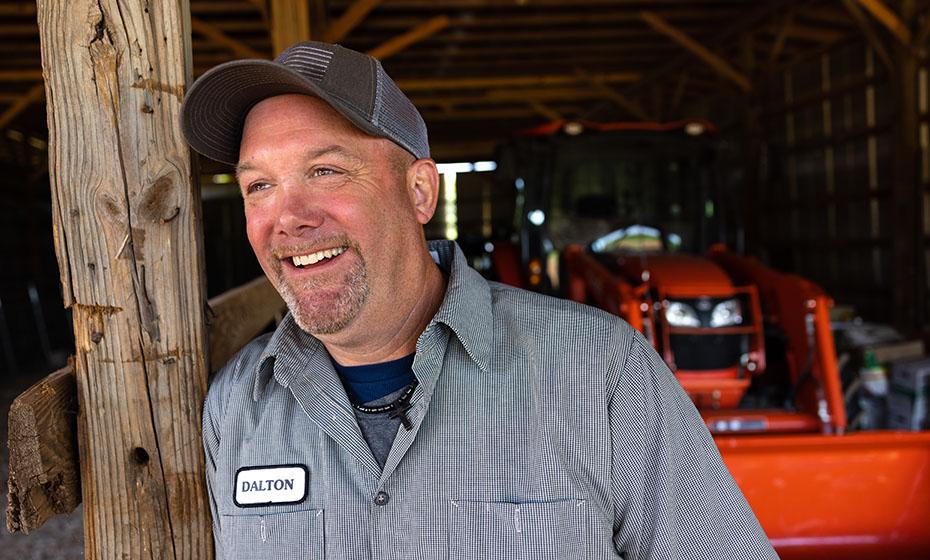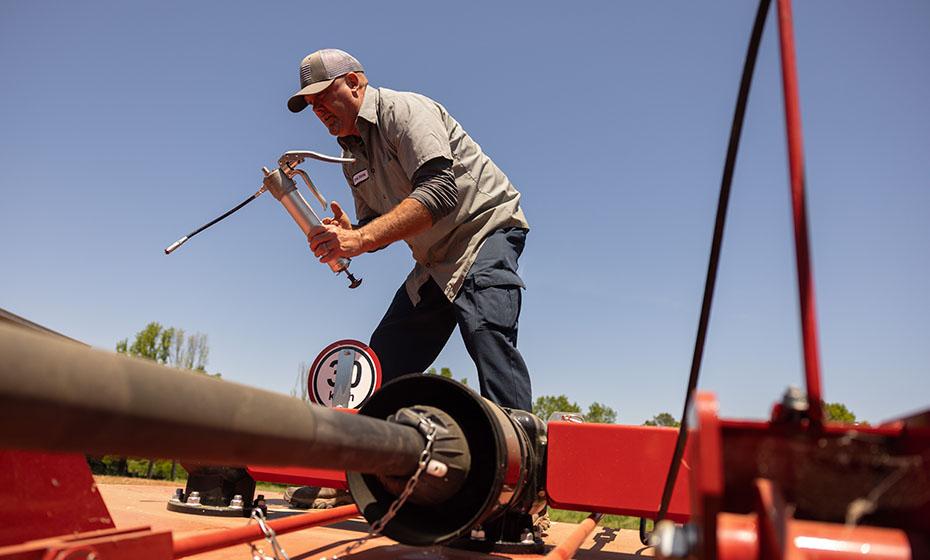Farmers Help Duke Energy Add More Renewables to Its Grid
Michael Dalton grows hay, and now solar power
By Gina DiPietro illumination Staff Writer
After several years with the N.C. State Highway Patrol, Michael Dalton traded in his patrol car for a tractor and 160 acres of rolling farmland in Mocksville, N.C.
“My dad farmed,” he said, “so we walked this together. He agreed it was a prime location … the privacy, the availability of land and the way it scopes around the exterior perimeter.”
Dalton uses the land, which is owned by his father-in-law, to produce and crop hay. Each spring, the hay is treated, cut, cured and then assembled into round bales and sold to local farmers to feed livestock.
What land they don’t need for hay – about 110 acres – is leased by Duke Energy as part of its mission to deliver increasingly clean energy to customers.
At 15.4 megawatts (MW), Duke Energy’s Mocksville Solar Facility generates enough carbon-free electricity to power, on average, about 3,000 homes a year.
For farmers, it’s a business opportunity.
“My father-in-law still owns the land,” Dalton said, “and it makes sense economically. There are a lot of factors that we as farmers can’t control, Mother Nature being the biggest adversary, so the additional income helps make it work.”
The partnership was initiated by a third-party developer, which identified the land as a good site for a solar facility. Once they secured a lease, Duke Energy acquired the site, said Director of Renewable Development Justin LaRoche, to expand the company's renewable energy generation capacity.
“As Duke Energy adds more renewables to its grid, something we’re doing at an ambitious pace," LaRoche said, "partnerships with landowners and farmers are essential in deploying the amount of new solar that’s needed.”
In the Carolinas, Duke Energy operates more than 45 solar facilities and has more than 4,600 MW of solar power connected to its energy grid. That could power the annual usage of nearly 1 million homes and businesses.
Solar plus battery storage is the next evolution of this generation. That, too, will help Duke Energy as it moves away from fossil fuels to meet its climate goal of net-zero carbon emissions by 2050. The company’s carbon emissions from electric generation are down 44% since 2005.
Other carbon-free technologies, such as onshore and offshore wind, hydrogen and small nuclear reactors, are attractive as energy resources because they have the potential to accelerate decarbonization in the U.S.
“The opportunity is there,” LaRoche said. “Coupled with it are some challenges, but we’ll work through them in time.”
Back in Mocksville, Dalton reflects on a different kind of change. His small farming community has experienced a big boost in economic development.
“As new warehouses and facilities get built, our availability to farmland is shrinking,” Dalton said. “So, I’m proud to keep my father-in-law's land in production."
It also affords him an opportunity that money can’t buy.
“I've been able to bring my own kids out here. And even though they didn't realize it, they were doing a little farming,” he said. “You hear the stories of folks growing up on family farms, the stories of third- and fourth- and fifth-generation farmers. And I guess to be a small part of that, you know, that's rewarding.”
Sell or lease your property for renewable energy generation
To help build a more sustainable, carbon-free future, Duke Energy is seeking property owners with acreage that can accommodate power generation, such as large-scale solar facilities. If you are interested in selling or leasing all or part of your land, complete an interest form.
View original content here







